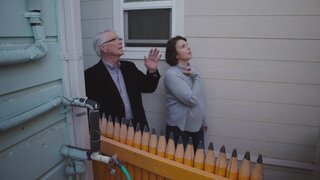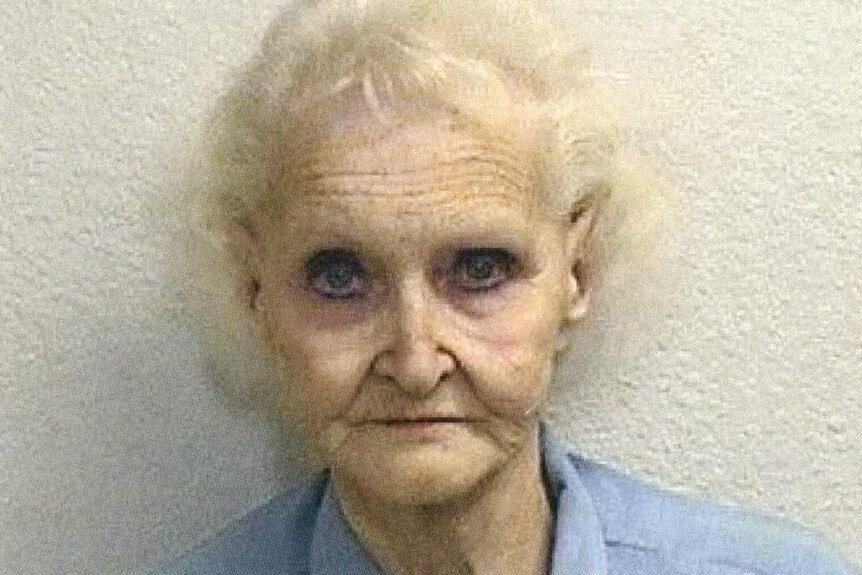Create a free profile to get unlimited access to exclusive videos, breaking news, sweepstakes, and more!
After Killing Her Boarders And Burying Them In Her Yard, Where Is Dorothea Puente Now?
Dorothea Puente was ultimately accused of killing nine people — but a jury wasn't convinced.
Plenty of people in the hospitality business get reputations for killing guests with kindness. Dorothea Puente, who ran an unlicensed Sacramento boarding house, became infamous for actually killing residents in the 1980s.
Convicted of three slayings, Puente earned the nickname the "Death House Landlady." The two-part Oxygen series Murders at the Boarding House chronicles Puente’s unsettling story.
RELATED: 'She Was Just Pure Evil': How Dorothea Puente, 'The Death House Landlady,' Got Caught
“Puente preyed on what investigators called ‘shadow people’ — the elderly, alcoholics and the disabled,” The Los Angeles Times reported in her obituary. “Though there were no witnesses to the slayings, prosecutors said Puente was one of the most ‘cold, calculating’ female serial killers the country had ever seen.”
Who Is Dorothea Puente?
Puente had a troubled childhood from the get-go. She was born Dorothea Gray in Redlands, California in January 1929. She was one of seven children born to Jesse James Gray and Trudie Gray, both of whom were alcoholics, according to the Sac Town Magazine.
When she was 8 years old, her father died of tuberculosis. Her mother, who was described as abusive, lost custody of Puente and her siblings before dying in a motorcycle crash when Puente was 10, the magazine reported.
In the years following her mother's death, Puente lived with different relatives across California. She later put down roots in Nevada with husband Fred McFaul, a World War II veteran who met a 16-year-old Puente when she was a sex worker in Olympia, Washington in 1946. However, their marriage fell apart by 1948 and Puente gave up their two daughters for adoption.
She then married Axel Johansson in 1952, after which they moved to Sacramento, where she'd remain until her arrest for murder. Their marriage was turbulent, with Johansson once having Puente institutionalized in 1961, the Sac Town reported.
They divorced in 1966, though Puente told the magazine that they remained in touch over the years.
In 1968, she married her third husband Roberto Puente, a Mexican immigrant who mostly agreed to the union for financial stability and a green card, the magazine reported.
Her last husband was Pedro Angel Montalvo, who left her after only a week of marriage, according to All That's Interesting.
Dorothea Puente's Boarding House

Initially, Puente stole from boarding house tenants, forging their benefits checks and cashing them in her name. She was eventually caught for forging a check in 1978 and sentenced to five years probation, in addition to being forbidden from running a boarding house, according to court documents.
However, Puente continued to prey on the vulnerable, working as an in-home caregiver and stealing from her clients while she was supposed to be helping them. She was again caught in 1982 and convicted of administering a controlled substance to another, grand theft and forgery. She served five years in a California State Prison, where a psychologist diagnosed her with schizophrenia.
The psychologist cautioned that Puente needed mental health treatment, writing, "She is to be considered dangerous, and her living environment and/or employment should be closely monitored," the Sac Town Mag reported.
Upon her release from prison, Puente illegally opened a boarding house, taking in unsuspecting victims.
After drugging victims, Puente buried them in the backyard of the two-story Victorian house and then cashed their Social Security checks, which continued coming in as authorities believed the people were still alive.
Her homicidal spree came to a halt in November 1988, when police came searching for a mentally disabled transient, Alvara Montoya, who’d been reported missing. Police eventually dug up seven bodies around the boarding house property. Two more bodies were found later, including the remains of Puente’s former boyfriend, Everson Gillmouth, who was found in a box that had been dumped in the Sacramento River.
How Was Dorothea Puente Caught?
After the first body was found in her yard, Puente made a run for it. Following the issuance of a murder warrant and search that swept across California, Nevada and Mexico, Puente was arrested in Los Angeles.
The arrest came after a tip by a man who said that he had met Puente in a bar, where she overly interested in his disability checks, according to the outlet.
In February 1993, Puente’s trial began in Monterey County, where the case was moved after extensive coverage in Sacramento. Public defenders representing Puente said her victims died of natural causes and suicide, not murder, reported The Los Angeles Times.
Puente was convicted in 1993 of three murders, though the jury couldn't reach verdicts on six other murder counts. She received two life sentences and a concurrent 15-year-to-life sentence.
While in prison Puente communicated with Shane Bugbee, who collected dozens of family recipes into the book, “Cooking with a Serial Killer.” The book includes Bugbee’s phone interviews with the mass murderer, who addressed her conviction and the victims.
“None of them were murdered,” she insisted.
Where Is Dorothea Puente Now?
At age 82, Puente died of natural causes behind bars in 2011 at the Central California Women’s Facility in Chowchilla, where other famous female killers like Suzan Carson were held.
To learn more about Dorothea Puente’s case, watch “Murders at the Boarding House" on Oxygen.
(This story was originally published on April 16, 2021 and has been updated.)



































